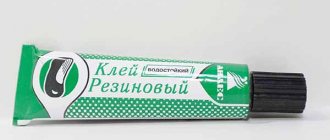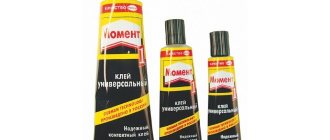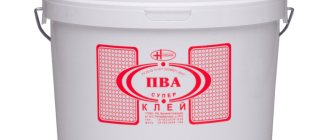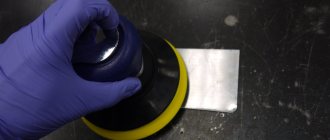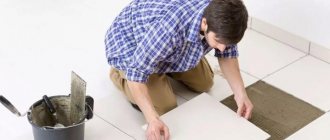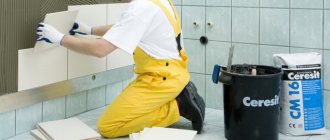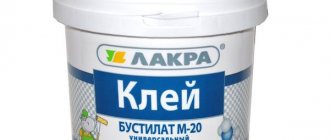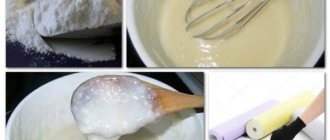What is casein
Casein is a protein derivative obtained by curdling fermented milk.
In other words, when sour milk is curdled, this enzyme can be isolated from it. Caseinogen is used not only in the production of adhesives, but also paints, plastics, and medicines. In appearance, this substance is a powdery material. There are four grades based on the degree of purification. In this case, quality can be determined externally by eye.
- Top grade. Purified casein is predominantly white in color. Ivory shade is allowed. The substance consists of granules of the same diameter (4–5 mm). The particles lag behind each other and are crumbly.
- First grade. Particles of a light, amber hue, also homogeneous, may partially stick to each other.
- Second grade. These granules are dark yellow and cloudy. May form sticky lumps of several particles.
- Third grade. Yellow-brown particles can be represented by a total mass of connected granules.
The lighter the shade, the purer the substance.
Casein and its producers
Casein is obtained by curdling milk from its precursor, caseinogen. This substance can be called part of the complex structure of milk, where it is found in the form of calcium caseinate. The process of casein coagulation is familiar to many - when enzymes from lactic acid bacteria enter milk, curd is formed. In industry, to create glue, technical casein is obtained by adding acid to milk.
Technical casein is available in four grades:
- Top grade. It is represented by identical small (up to 5 mm) granules of a white, creamy shade, without even the slightest inclusions.
- First grade. The color is slightly yellowish, the grains are the same in size, but some sticking is allowed.
- Second grade. Yellow powder made of grains up to 10 mm in size, the presence of lumps is acceptable.
- Third grade. The color of the powder is dark yellow, with possible brown inclusions.
To obtain glue in production, raw materials are purchased from milk processing plants. Products from Western countries are in greatest demand. In Europe and America, a number of modern technologies are used that make it possible to prepare casein of the highest quality without extra costs (ejector method, by coagulating casein and other methods).
Casein Basics
But it was appreciated as a natural adhesive composition only in the 19th century, that is, relatively recently. In 1892, the components of the adhesive composition changed in order to achieve high levels of resistance to prolonged exposure to moisture. And the technological and mass production of glue was started only in the last few decades.
In general, many people know approximate information about the structure and properties of a product. Anyone who uses this product will be able to say exactly what this adhesive composition is made of. This is required for error-free work with it, like with an adhesive solution. But the most important thing is that solutions of such glue help to form an irreversible colloid.
Casein itself will be a granular powder, which is divided into four grades. They differ in appearance and quality:
- The highest grade - granules have the same size and color, and also have whitish-caramel shades.
- The first grade consists of grains of a uniform size, among which there are sometimes sticky granules, and they also have light yellow tints.
- The second grade - the mixture is distinguished by sticky lumps or granules, which differ slightly in size from each other, and the grains also have a yellow tint.
- The third grade is granules of different sizes, with a predominance of dark shades.
Now a little about the properties.
Advantages and disadvantages of casein glue
Finishers value casein glue for its advantages. These include:
- An excellent option for gluing wood products.
- The product is environmentally friendly, due to which you can work with it even without special equipment.
- Duration of dry storage if the rules are followed.
- The finished seam is resistant to prolonged exposure to moisture and temperature changes.
The disadvantages are the following:
- After the powder has been prepared, the shelf life will be no more than 5 hours, and the exact amount of the mixture should be prepared so as not to dispose of the hardened mass afterwards.
- Made from natural ingredients, the adhesive is susceptible to mold.
- Over time, the finished connection may darken, which will spoil the appearance of the product.
To protect the adhesive mass from the appearance of mold and mildew, you can add a small amount of ammonia to it.
Composition and properties of the adhesive composition
If we talk about the appearance of the natural adhesive mass, it will be a powder, which most often has gray shades. The granules of the glue can differ in size, and the composition varies depending on the specific manufacturer and the requirements for the characteristics of the technical type.
But the main components are:
- Water.
- Rosin.
- Phosphates and nitrates.
- Calcium caseinate.
- Amino acids.
- Lime.
- Sodium bicarbonate.
- Kerosene.
The basis will be the complex structure of milk protein made from calcium salts (caseinates). The components are considered environmentally friendly, due to which casein glue packaging has an ECO mark, and the list of components can be expanded or narrowed.
Technical characteristics of casein glue are as follows:
- Excellent solubility in water, without the appearance of lumps.
- The strength of the connection of wood parts is up to 100 kgf/square centimeter (can be classified as an “extra” adhesive solution).
- The dynamic viscosity level ranges from approximately 10.8 to 27 P.
- Has a specific aroma.
- The period of time before hardening is a maximum of 5 hours.
Most of the main substance is found in goat milk - 4.6%. But basically the technical component is obtained from cow's milk, and it contains 3.15%.
Characteristic
PVA
The production of PVA glue begins with the selection of the following components:
- Gelatin – 5 g;
- flour – 100 g;
- water – 1 l;
- glycerin – 4 g;
- alcohol – 20 ml.
We recommend: How and how to properly glue extruded polystyrene foam
One day before making PVA, gelatin is filled with water. The swollen gelatin, flour and distilled water are mixed, boiled in a steam bath until a dense, uniform texture is formed. Then add glycerin and ethyl alcohol to the mixture, stir and bring again to a thick, uniform texture. Allow the resulting adhesive mixture to cool and use it for its intended purpose.
Making your own glue
Carpentry
Wood glue is optimally used for durable gluing of materials, mainly wood, such as cardboard, plywood. To make glue, you will need tiles, which must be crushed and the crushed small pieces soaked in cold water so that it completely covers them. The resulting mixture must be kept until a soft jelly mass forms. As a rule, conversion takes 10-12 hours. Then the mixture in the container must be placed in a steam bath and stirred continuously until it reaches a uniform liquid texture. Allow the resulting mixture to cool, then use it for its intended purpose. If thin glue is required, add a little hot water. To firmly bond a leather product, add 1 teaspoon of glycerin to 500 ml of the composition. This is such a difficult technology for making glue.
Tiled
It is best to glue façade and decorative tiles using tile adhesive. It is made from water, sand, cement and PVA. Since sand essentially acts as putty, it is recommended to take sand with a limiting diameter of 2 mm. The proportion of cement and sand is 1:3. For example, 1 bucket of cement requires 3 buckets of sand. To prepare the mixture, cement and sand are thoroughly mixed, and then a solution of water and PVA is added. For 1 bucket of tile adhesive you will need 500 g of PVA. The volume of PVA may increase when gluing tiles in places of high humidity. The resulting mixture is mixed until it acquires a uniform thick texture and is suitable for use. The glue must be used immediately, without waiting until it begins to harden. The hardened solution should not be diluted with water and used during the gluing process.
Casein
There are many similarities between wood glue and casein glue, but the latter is more resistant to moisture. Casein glue is made from casein powder, water, and borax. Water is added to the casein powder and then infused for about 3 hours. Hot water is also added to the borax in a ratio of 1:7. The resulting solution is mixed with casein, boiled in a steam bath and stirred continuously. After 40 minutes. After removal from the steam bath, the glue is ready for use.
You can make your own casein powder. Why is sour low-fat milk expressed through thick gauze? Casein from gauze is washed in water, boiled, squeezed and dried until hard.
To make a homemade casein mixture you will need borax, water and casein powder in a ratio of 1:4:10. When combining ingredients, water should be added gradually. It is advisable to use the finished composition immediately, since after about 3 hours it hardens and loses its stickiness.
We recommend: Selecting adhesive for interior finishing with gypsum tiles
Waterproof
Quite often, households need glue that is not afraid of dampness and is waterproof, for example, for a rubber boat. We offer several methods for producing adhesives:
- Low-fat cottage cheese and slaked lime are mixed until a thick, uniform mass is obtained. After which the glue is suitable for use. It is applied to surfaces that should be clamped and dried well;
- 100 g of high-quality wood glue is boiled over low heat until it acquires a liquid texture. Then 35 g of drying oil is added and the mixture is stirred well. Please note that it can only be consumed after preheating.
Making glue at home is a simple and affordable process! Of course, homemade glue is not used for gluing frames or repairing punctures in car wheels, but it is not replaceable in everyday life.
Description and varieties of casein
Casein powder appears as gray granules. When the product is diluted, it turns into something like a paste in color and consistency. In appearance, the varieties differ in the color and size of the granules, the presence of inclusions and lumps.
Higher
Premium casein is a homogeneous mixture without impurities. The granules do not exceed five millimeters in size. The color of the powder is white or cream without any inclusions.
First
The grains may be stuck together, but are easily separated by hand. The shade of the mixture is light yellow.
Second
Yellow granules reach 10 mm. The composition may contain small lumps. A small content of mechanical impurities is acceptable.
Third
Dark yellow powder interspersed with a brownish tint. Granules may vary in size. The composition also includes mechanical impurities.
Purpose
Used for joining parts made of cardboard, leather, suede, fabric, wood, porcelain and plastic. It is the main solution for working on plywood, cardboard, and furniture production. Connects materials of different densities and textures together.
It is part of finishing materials (putties, putty mixtures, casein paints). At the same time, such a natural component ensures the stability of the compositions against alkalis.
The glue has found its application in the production of wooden children's toys because it contains eco-friendly components.
Glue composition
It is difficult to imagine that an adhesive substance, or more precisely, casein glue, can be an animal product. The composition of this product is designed by nature from calcium caseinate, nitrates and inorganic phosphates. The glue was created by N. Mulder in 1838.
This naturally occurring product is insoluble in water, but changes its structure in weak mixtures of alkali and salt. Being made from milk, it contains amino acids in a proportion suitable for the body. It can be said that the main part of good quality and durable glue has sufficient nutritional value and nutritional value.
Casein glue exhibits its effect when joining materials of different structures, for example, ceramics, cardboard, porcelain, leather. It works well when gluing earthenware, plastic, foam, and fabric. But most of all it is used when working with wood parts. This determines the main areas of use of the product.
Composition and properties of glue
In appearance, casein is a grayish powder with small and larger granules. What is it, what does this product consist of? In terms of its chemical composition, casein is a milk protein; it contains many essential amino acids, calcium caseinate, phosphates, and nitrates. Casein-based glue can have different compositions depending on the brand and subsequent use. Most often it is used for wood, and the adhesive composition includes the following additives:
- lime;
- rosin;
- kerosene;
- water;
- sodium bicarbonate, etc.
The consistency resembles a paste. All components included in it are environmentally friendly, therefore furniture for which the product was used for gluing is produced with the “ECO” mark.
The technical characteristics and properties of the dry material are as follows:
- types of glue – “ordinary”, “extra”;
- appearance – gray powder, free of foreign inclusions, the presence of a small number of lumps is acceptable (disintegrate when rubbed with hands);
- the smell is specific, not putrefactive;
- solubility in water – good, without residue;
- dynamic viscosity at room temperature – 10.8-27 P;
- preservation of fluidity after dilution: for “extra” - 5 hours, for “ordinary” - 4 hours;
- wood bonding strength during dry testing - for “extra” - 105 kgf/sq. cm, for “ordinary” - 75 kgf/sq. cm.
Advantages and disadvantages
Casein glue is a popular product that is successfully used in industrial production and at home, as it has a number of advantages:
- reliability (especially when gluing wood to wood);
- resistance to high humidity and temperature;
- environmental friendliness;
- during transportation, no special container or room is required where the glue will be stored;
- in dry form it retains its properties for up to one year.
Disadvantages of casein glue:
- The maximum shelf life of the finished mixture is 4 hours; after this time, the properties of fluidity and viscosity are lost, and the glue cannot be revived.
- The adhesive composition penetrates very deeply into the pores of the material and is capable of leaving unattractive stains on the surface that darken over time. For this reason, casein glue is not used for gluing thin (such as fabric) or light-colored materials.
- Due to the slow evaporation of moisture from the composition and the natural origin of casein glue, it can be damaged by mold.
Tip: To prevent the appearance of mold fungi in the adhesive composition you prepare yourself, add ammonia to it.
Preparing glue from ready-made powder
Made from dairy industry waste, casein glue dry matter is a light gray powder reminiscent of light cement.
The sequence of actions is as follows:
- The powder is diluted in a low glass container with a flat bottom in the following proportion: 1 part glue powder to 1-2 parts water. The specific amount of liquid depends on the purpose of the glue: for hard wood, a thinner solution is used, and for soft wood, the composition is thicker.
- The glue mixed with water is continuously stirred for 20 minutes until a homogeneous mixture without lumps, similar to sour cream, is formed. Now the glue can be used.
When using casein glue, you need to remember the time: an hour after production, the drying and thickening process begins. Therefore, it needs to be diluted in small portions. After two or three hours it will become completely unusable. For the same reason, you should not leave your brush unwashed; it will not recover.
It is necessary to dry the adhesive joint for three to five hours.
Casein glue: application
This product is the main component of production from plywood, cardboard, and woodworking. Thanks to the properties of this glue, the internal structure of the wood is significantly improved.
Casein glue is becoming increasingly relevant:
- Widely used in furniture production. Together with auxiliary components - copper sulfate, soda, lime, kerosene, rosin and others - it is used when working with various types of wood, as well as when gluing wood, leather, plastic or cardboard. The natural origin of the substance makes it possible to use it to produce furniture and other items with the “Environmentally friendly” label.
- Used in everyday life and the construction industry. It is a component of putty, putty and alkali-resistant paints.
- Due to its properties, casein is excellent as a raw material for the chemical industry. It is distinguished by its resistance to high temperatures and high humidity. This makes it possible to use it for the manufacture of ceramics, plastic products, various types of paints and concrete. Casein dyes create beautiful porous and high-quality surfaces with matte or silky textures, which, combined with the properties of durability and quick drying, allows them to be used when painting building facades. This is another advantage of casein glue.
- Casein is also very widely known in other industries: printing, painting, toy production, and also as a dye and connecting component in automobile and shipbuilding.
- Casein, a nutritious and healthy product, is one of the main proteins of animal origin. This makes it possible to widely use this substance in the food industry. Casein has become an additive in infant formula for newborns and in specialized nutritional supplements for adults and athletes.
- Casein glue mixed with modified starch is used in trade. It is used to glue labels to glass products and dishes.
The use of glue in icon painting
Casein is widely used in techniques such as tempera and glue painting. It belongs to protein compounds whose ingredients are sulfur and nitrogen. Therefore, it is less subject to decomposition and decay processes than, for example, glue containing plant components.
Casein is absolutely insoluble in water - neither hot nor cold. It only swells in it. And its dissolution occurs only when mixed with ammonia, borax, soda, ammonium carbonate, caustic lime and caustic potassium and soda, that is, with alkalis. Using these solvents, casein glue for icon painting is produced, which has great adhesion to surfaces and high adhesive ability, and can also emulsify varnishes, oils, etc.
When the glue begins to dry, its volume decreases greatly and it begins to crack. And casein, obtained by mixing with caustic lime, generally ceases to dissolve in water when it dries. Casein treated with alumina acetate or formaldehyde does not swell in water.
Such mixtures do not require special preservative elements. The components that dissolve casein themselves prevent rotting.
Manufacturers
In most cases, casein is provided by dairy processing plants, since such a protein is one of the main components of milk. Dairies supply raw materials for the production of glue (casein) to large manufacturers.
The products of European companies are distinguished by the highest quality due to the use of modern technical methods and technologies in the production process. The use of expensive modern equipment allows us to obtain a reliable, reference product.
American manufacturers use the ejector method to produce casein and casein glue. Thanks to the excellently developed cheese industry in France, there is its own method for producing casein. The method involves coagulating casein complexes without the use of microorganisms or special enzymes.
Casein producers
Casein is produced primarily by milk processing plants because it is the main protein of the many proteins found in milk.
Dairies supply raw ingredients to large enterprises. They are used by paint and varnish, glue, perfume, textile industry enterprises and others: pharmaceutical companies, woodworking factories.
It is worth noting that it is casein from European producers that is distinguished by its high purity, which is achieved by using modern technical and technological methods in production. For example, by using the membrane method for the production of micellar casein, it is possible to extract natural, natural protein, which carries many of its inherent beneficial properties.
In addition, the use of expensive specialized equipment creates the conditions for the production of a reliable, high-quality technical product. These are casein and casein glue.
Manufacturers in America widely use the ejector method for this. In France, due to the good development of the cheese industry, the French method of casein production has spread everywhere. Its essence lies in the fact that the raw materials - casein complexes - are coagulated without the use of enzymes, as well as microorganisms, such as lactic acid bacteria and their strains and yeast fungi.
Some of the most popular casein manufacturers producing the product for sports and dietary purposes are Dymatize, Universal Nutrition, Gaspari, Muscle Tech, BSN, Optimum Nutr, Ultimate Nutrition, Scitec Nutrition, BioTech Nutrition.
How to make at home
There are several ways to make casein glue with your own hands:
- The simplest and most accessible. Pour 40 g of cottage cheese with 10 ml of ammonia, mix the mixture thoroughly.
- Combine casein powder and water taken in equal proportions. Let the mixture brew for 40-50 minutes, after which the composition is completely ready for use.
- Glue prepared according to the following recipe has maximum resistance to moisture. Mix 20 g of casein (powder), 1 gram of slaked lime, 4 grams of rosin and 40 milliliters of water. Leave the mixture for 2 hours. Dilute 2 g of borax in 12 tablespoons of water, the solution should be hot. Combine the settled mixture of rosin, lime and casein with a borax solution, mix thoroughly, add 20 ml of water and 2 ml of ammonia. Mix everything well again.
- Heat 1 liter of milk, but do not boil. Add 9 teaspoons of vinegar and heat the mixture, stirring, until lumps of cottage cheese and whey appear in it. Strain through a sieve. Place the remaining cottage cheese in a frying pan, add 3 tablespoons of soda and a little water to it, heat until bubbles appear on the surface of the mass. Mix the resulting glue thoroughly and let it cool.
Tip Use homemade glue as quickly as possible, otherwise it will dry out and lose its useful properties.
The procedure for making casein glue is simple, and the number of ingredients in some recipes is minimal, so almost anyone can obtain a similar composition in small quantities.
What will you need for work?
Main ingredients and equipment for preparing casein glue:
- skim cheese;
- container for washing;
- fine-mesh colander or sieve;
- a piece of clean cotton cloth for straining;
- immersion blender or electric drill with an attachment;
- coffee grinder;
- slaked lime powder;
- water;
- flat tray for drying;
- kitchen scales.
How to prepare glue?
Grind the curd mass and rinse several times with plenty of boiled water. Then it is thrown into a colander lined with two layers of thin cotton fabric and wrung out. The washed and squeezed mass should be spread out in a thin layer and dried. You can dry it in the sun, in a slightly open oven on the lowest heat, in an electric oven, in a vegetable and fruit dryer at temperatures up to 60°C, since at higher temperatures the protein is destroyed.
After drying, small granules of dry casein are formed. In this form they can be stored for a very long time without loss of quality and used to prepare glue as needed.
Stages of preparing glue from dry casein:
- grind the granules in a coffee grinder and weigh;
- add slaked lime powder in a 1:1 ratio;
- dilute with water at the rate of 100–150 ml of water per 100 g of dry mixture;
- mix.
Casein glue is prepared immediately before work, because it quickly thickens, loses its adhesiveness and becomes unusable. After gluing, you need to keep the parts under pressure for about 8 hours. During this time, complete polymerization of casein occurs, during which it turns into insoluble calcium caseinate. It takes about a day for the final stabilization of the composition.
Glue can be prepared in a simpler way, bypassing the stages of straining and drying:
- the low-fat cottage cheese is ground in a blender until smooth;
- Continuing to stir, add ammonia drop by drop;
- the finished glue should look like a homogeneous white gelatinous mass;
- to give it antiseptic properties, you can add a few drops of formalin or a solution of aluminum alum.
Glue according to this recipe cannot be prepared in reserve. After a few hours it will turn into a solid mass that cannot be dissolved in water.
In the absence of ready-made curd mass, it is replaced with milk with a fat content of no more than 1.5%. The container with milk is heated in a water bath to 35°C and vinegar essence is added to it at the rate of 5 ml of essence per 1 liter of milk. The curdled milk is filtered, and the resulting mass is used instead of curd.
If you want to get a water-soluble version of the glue, then the curd mass is mixed with sodium tetraborate (borax). The transparent yellowish gelatinous substance is usually used for gluing cardboard, gluing stamps or temporarily gluing any other materials. It hardens, but this polymerization is reversible. In the presence of moisture or under a stream of steam, the composition softens and the glued fragments can be separated.
How long and how can it be stored?
The shelf life of homemade casein glue is limited to a few hours. The freshly prepared composition has the best qualities. This is not always convenient and requires additional time to purchase the necessary ingredients and mix them before work. In some cases, there is raw material in the form of sour cottage cheese, which needs to be urgently processed.
Both problems can be solved with the help of casein preparation. Casein granules are stored well in a dry and clean container with a closed lid. To prepare the glue, grind them into powder, add the same volume of slaked lime and dilute with water to the desired thickness. Another preparation option is a mixture of slaked lime and casein powder.
Making your own glue
Making casein glue with your own hands is so simple that not too much of it can be made at home, and in several ways.
The sequence of steps in the first process is as follows:
- Carefully pass the low-fat cottage cheese through a sieve, then rinse under running warm water.
- Add ammonia drop by drop and stir to obtain an almost transparent gelatinous paste. A durable, reliable adhesive for not too complex home carpentry projects is ready.
You can make glue using another method:
- Leave the skim milk in a warm place and wait for it to sour and curdle.
- Then filter, best through porous paper, spreading it in a colander.
- Rinse the resulting mixture under running water and tie it in a linen bag. After this, boil to remove any remaining fat.
- Spread the resulting mass evenly and dry at room temperature.
- The result is dry casein. In order to give it adhesive properties, it must be mixed with water and added borax.
Pros and cons of homemade casein glue
Pros of homemade casein glue:
- ease of manufacture;
- low cost;
- availability of ingredients;
- environmental friendliness, absence of harmful components;
- resistance to moisture and temperature changes;
- adhesion strength after drying.
Flaws:
- limited shelf life of the finished mixture;
- the dried composition can change the original color of the product and leave dark spots;
- slow polymerization, until the end of which the glued fragments cannot be touched;
- In glue without the addition of ammonia or formaldehyde, fungus can multiply.
I hope that the material presented is enough to prepare high-quality casein glue on your own. The following video will help you understand the above.
Common Mistakes
Casein glue is quite short-lived when diluted. After 5 hours, the composition will lose most of its properties, so it is better to use it immediately after preparation. When diluting the powder yourself, it is important to pay attention to ensure that there are no lumps that will interfere with the uniform application of the composition.
Industrial production of glue
As a rule, in this case, rennet casein is used to make glue. So, the raw materials remaining after preparing dairy or butter products are mixed with rennet.
According to another method, you need to add acids to the glue, as a result of which the casein will be fermented milk.
Acid whey is used to process skim milk, however, you can see that the casein grains sink to the bottom. Then it should be washed well several times, which will make the texture of the grains more dense.
After which excess moisture is removed by pressing or using a special centrifuge.
Finally, the casein grains need to be dried, crushed, and the composition enriched with additional components, which ultimately help to obtain glue.

